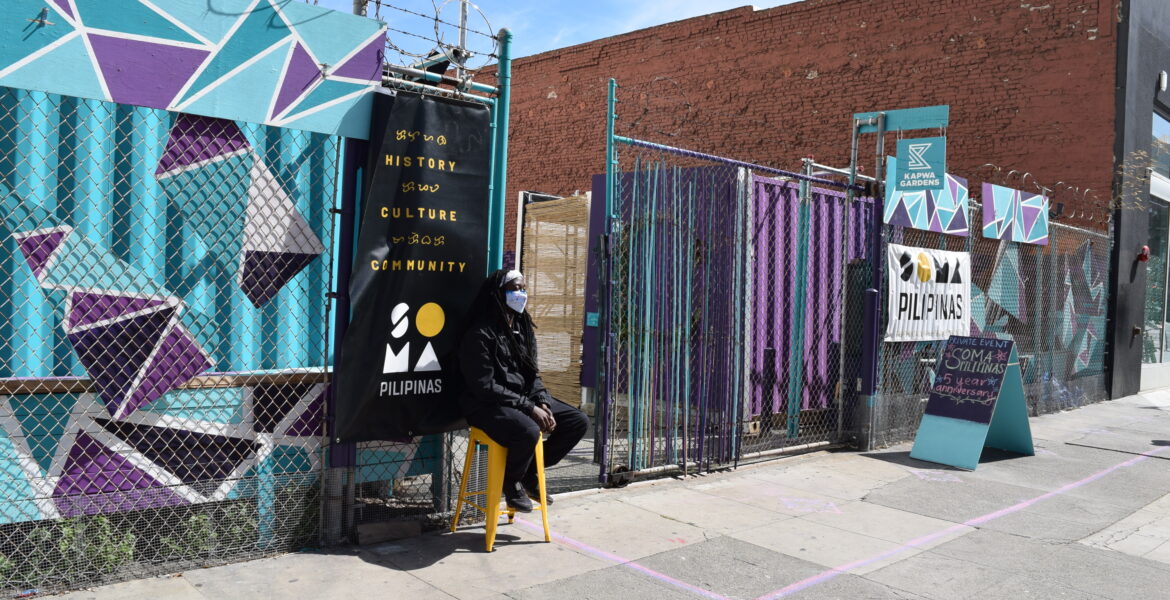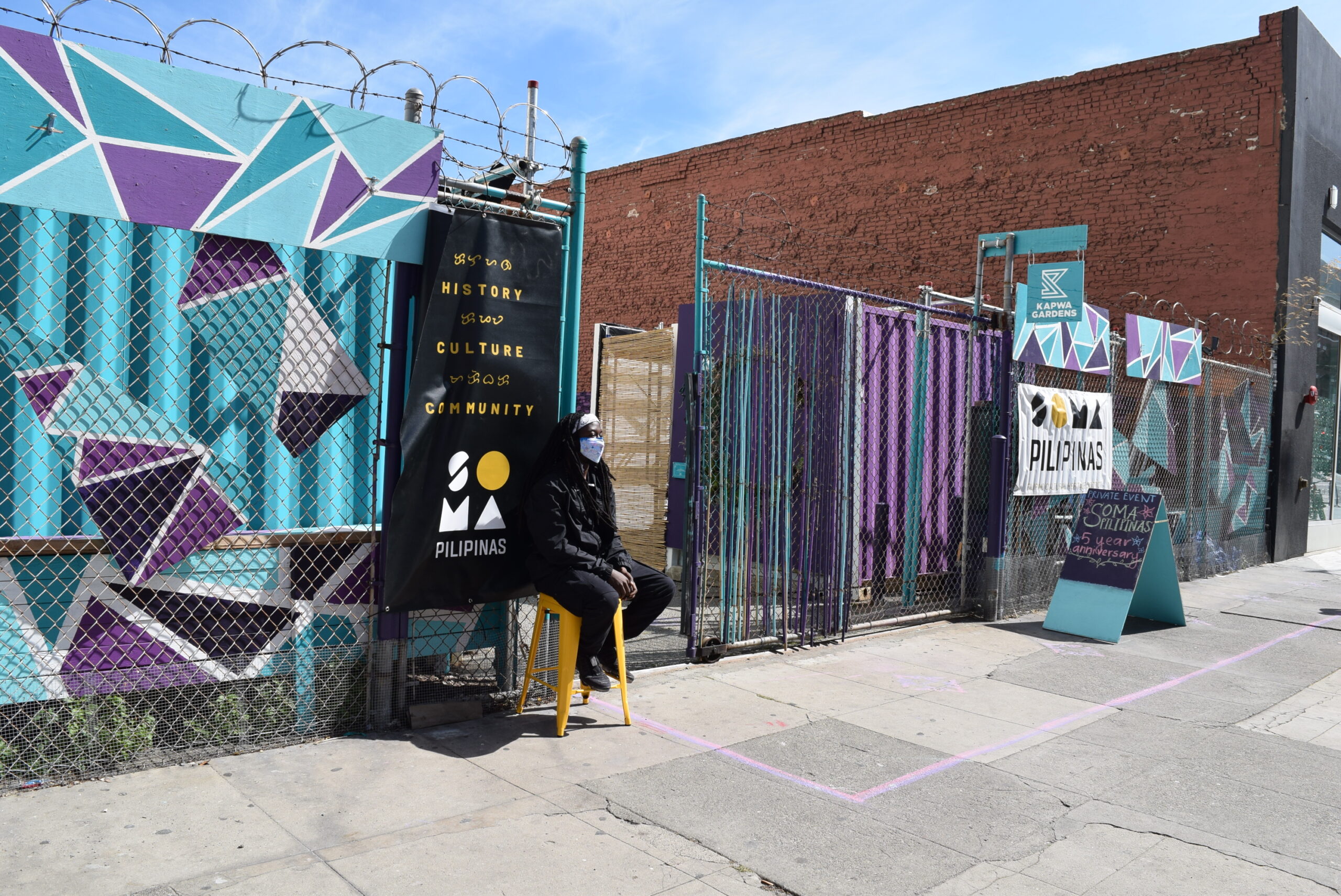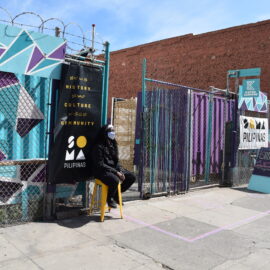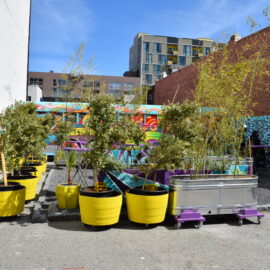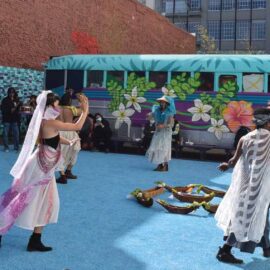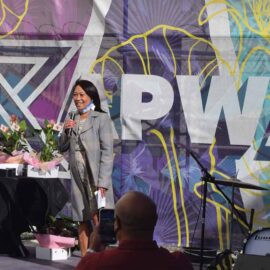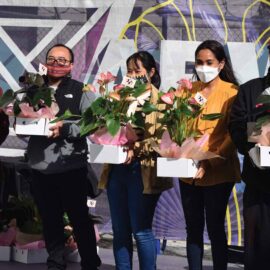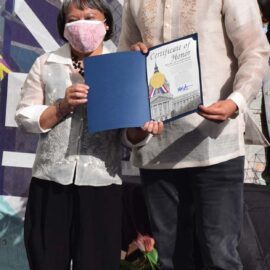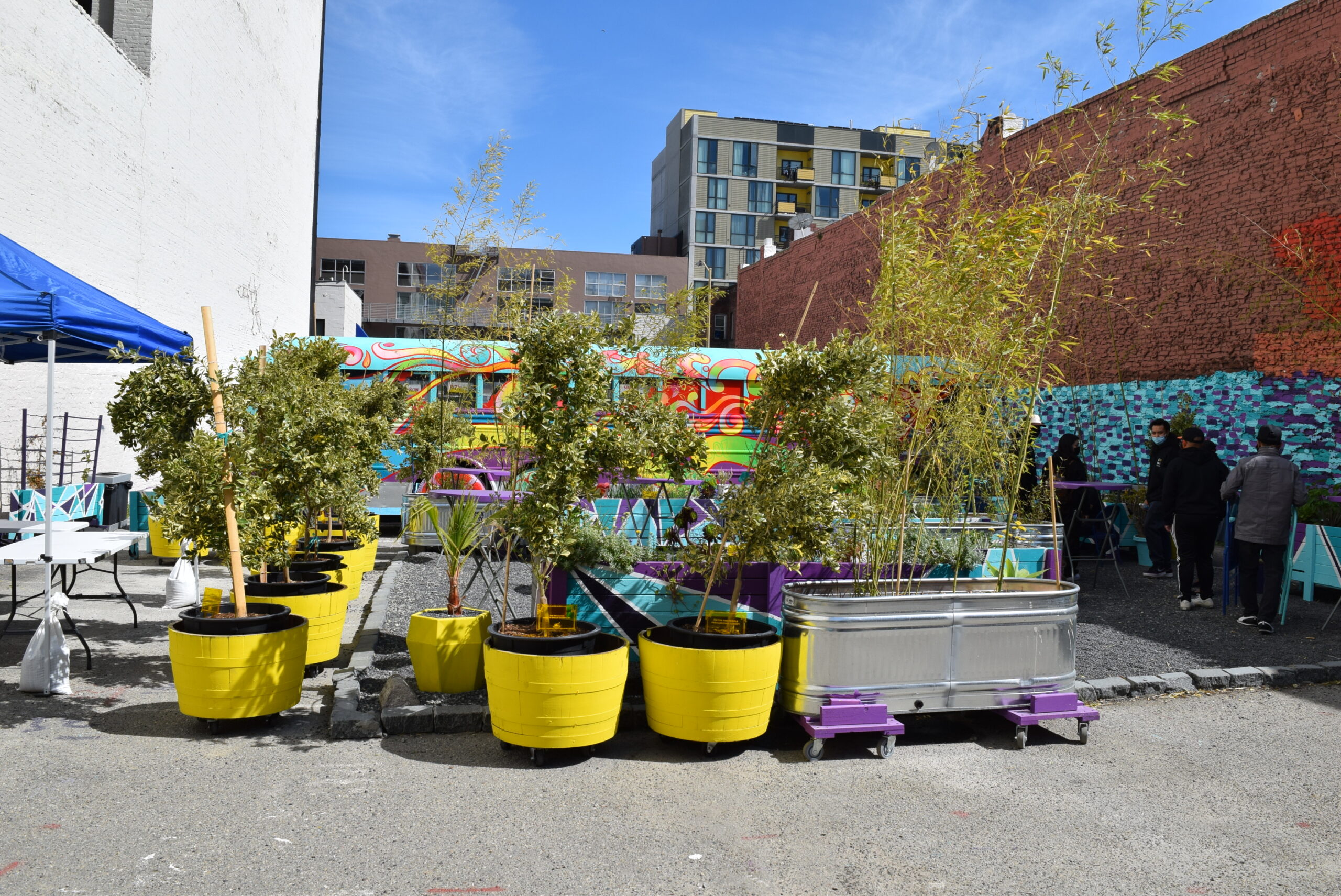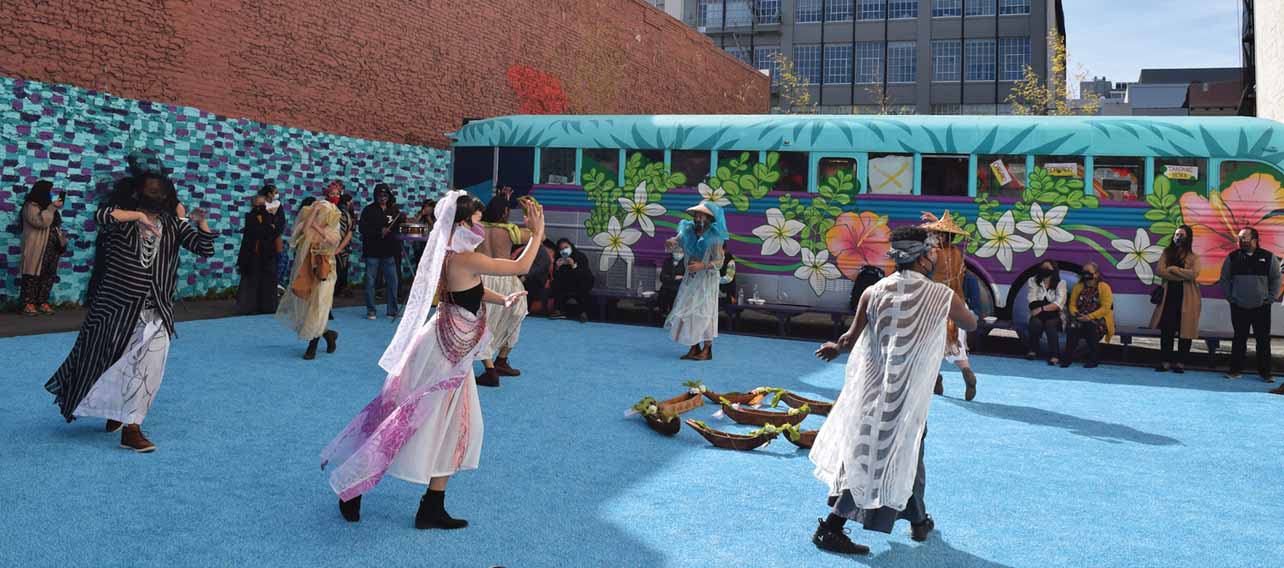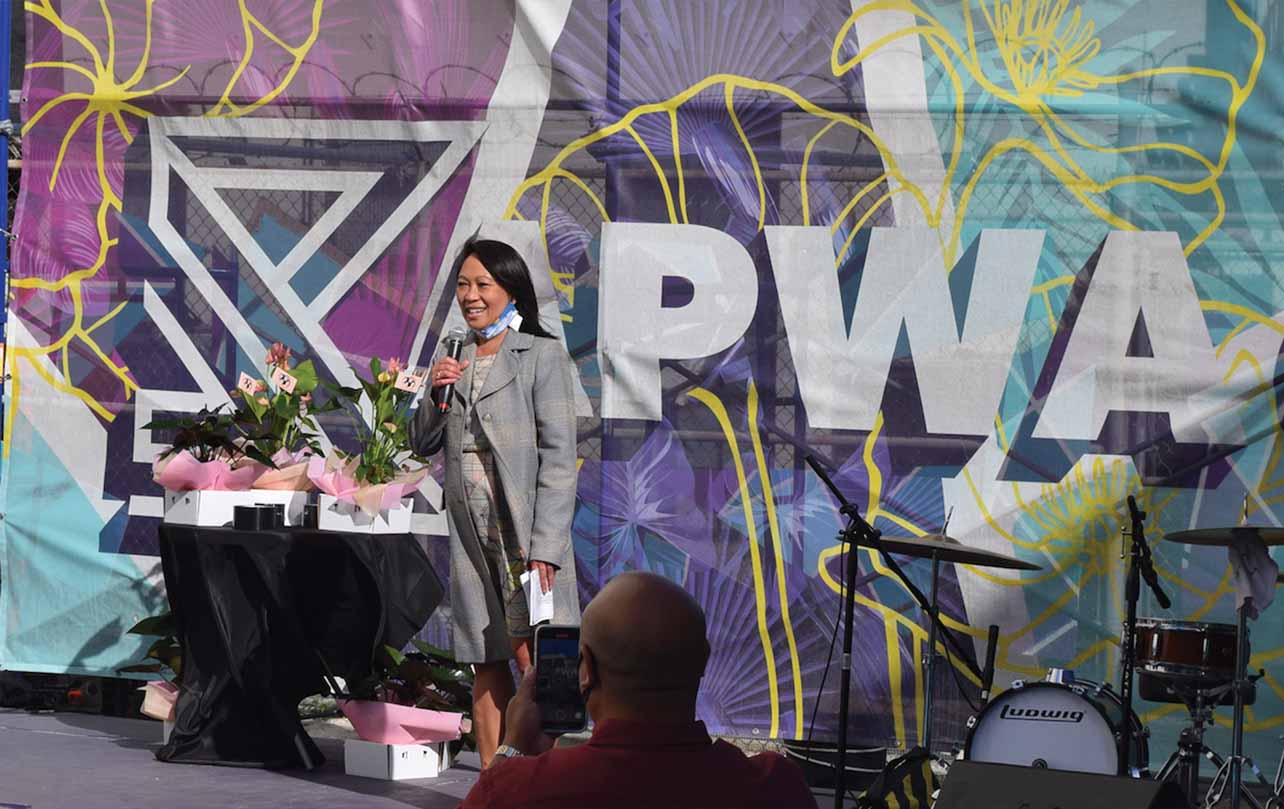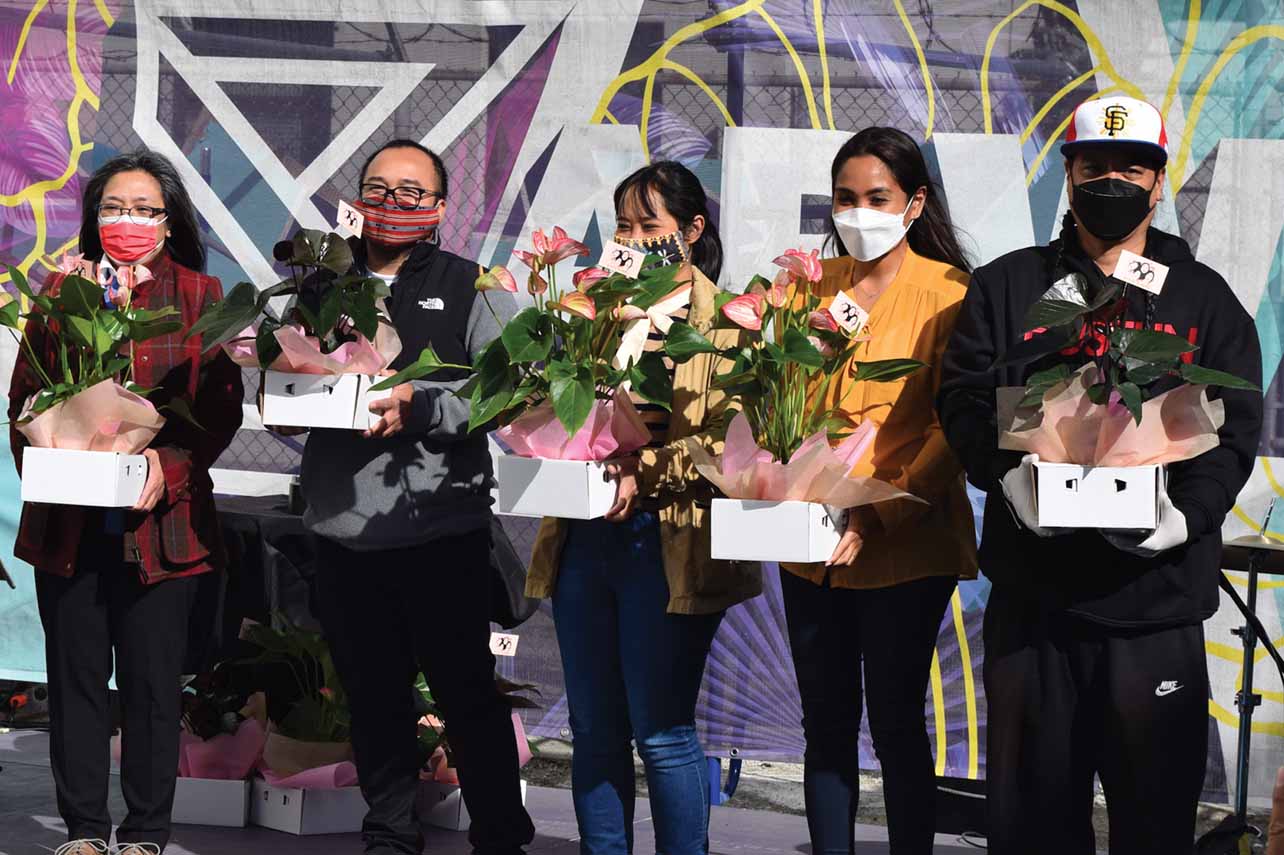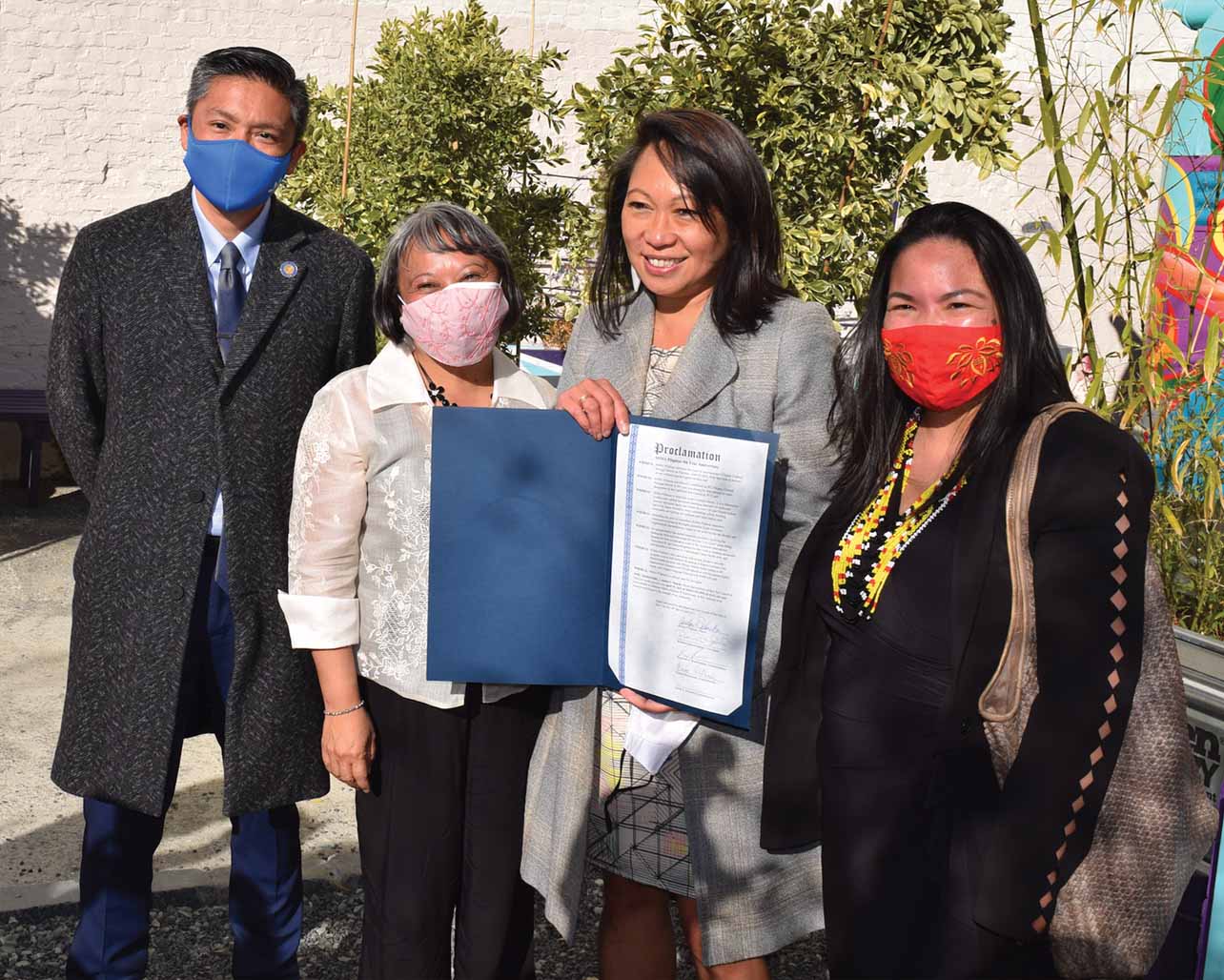SOMA Pilipinas celebrates 5 years of advocacy work at Kapwa Gardens in SF
KAPWA GARDENS OPENS IN SF. A new space where Filipino Americans can gather in the South of Market area in San Francisco opened on April 14. Located at 967 Mission Street, Kapwa Gardens is open Wednesdays to Sundays from 10 a.m. to 6 p.m. and will feature an array of activities. | AJPress photo by Joseph L. Peralta






